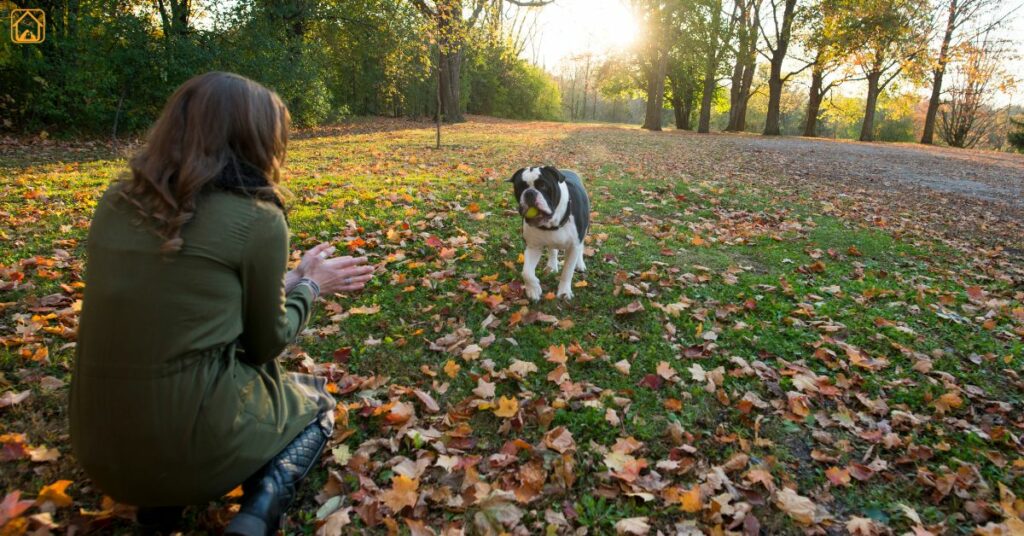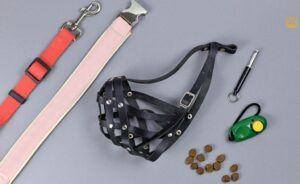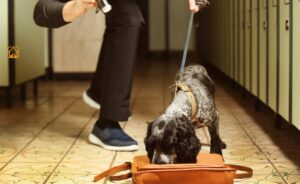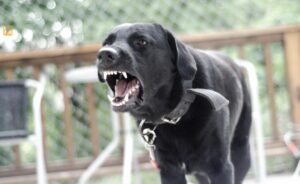Why Recall Training Matters for Every Dog
Reliable recall – How to Teach a Dog to Come isn’t just about obedience, it’s about safety and freedom. Imagine your pup dashing toward a busy street or getting distracted by wildlife on a hike. In these moments, knowing your dog will come when called can literally save their life.
Recall skills also open up more opportunities for off-leash fun, safe playdates, and stress-free walks. When your dog trusts you and responds to the come command, you both get to enjoy more adventures and deeper connection. I remember the first time my own dog ignored a recall, my heart skipped a beat! After that, recall training became our number one priority.
Understanding the ‘Come’ Command: Reliable Recall Explained
So, what does ‘reliable recall’ really mean? In simple terms, it means your dog will come to you almost every time you call, no matter what’s going on around them. It’s not about perfection, dogs aren’t robots, but about building consistency, trust, and positive associations with the command.
Reliable recall is taught with patience and positive reinforcement. Instead of being just another rule, the come command should be the gateway to all things fun and rewarding for your dog. Common phrases in dog training circles like “dog recall training tips” and “positive reinforcement recall” aren’t just buzzwords, they’re the foundation of long-term success.
Getting Started: Essential Supplies and Setting Up for Success
Before you dive into come command training, gather these basics:
- High-value treats: Think chicken, cheese, or commercial training treats, something irresistible!
- Long leash (10-30 feet): For controlled practice and safety during long leash recall training.
- Clicker (optional): Helpful for clicker recall training to mark the right behavior.
- Quiet, low-distraction area: Start indoors or in a fenced yard.
- Patience and enthusiasm: Your energy makes a difference!
Step-by-Step Guide: Teaching Your Dog to Come When Called
Teaching your dog to come when called is one of the most important commands they can learn. A strong recall keeps your dog safe and gives you more freedom during play, walks, or even emergencies. This step-by-step guide will help you teach your dog to come running to you, every time, with joy and confidence.
Step 1: Pick Your Recall Word
Start by choosing a specific recall word that’s short and consistent. You can use something like “come,” “here,” or even a fun cue like “party time!” The key is to avoid using your dog’s name as the command, since you probably say their name casually all the time. If your dog has learned to ignore your current cue, it’s okay to choose a fresh word to reset things.
Step 2: Start Indoors with Minimal Distractions
Begin your training in a calm space where your dog can focus. Let them explore a bit. Then, say their name to get their attention, followed by your recall cue in a cheerful voice. Use an inviting tone, crouch down slightly, or even pat your legs. The moment they head toward you, celebrate like they just won the lottery & smile, cheer them on, and give a yummy treat and praise when they arrive.
Step 3: Practice Short, Positive Sessions
Keep training sessions short, for 5 to 10 minutes is plenty. Focus on creating happy experiences around the word. If your dog gets distracted or doesn’t respond right away, don’t scold. Use encouragement like clap, whistle, or make kissy sounds to draw them in. Use a long leash if needed to gently guide them without pressure.
Step 4: Gradually Add Distance
As your dog starts responding well at close range, slowly increase the distance. Take a few steps back each time before using your recall cue. Try this across rooms or down hallways. Once your dog is doing well indoors, move outside to a quiet fenced area. Use a long line for safety and be patient. The real magic happens when you reward generously, give high-value treats when they come running right away. This tells your dog, “Wow, coming to you is the best thing ever!”
Step 5: Practice with Family Members
Get the whole household involved. Take turns calling your dog from different parts of the home. Make it a fun game. The change in voices, faces, and directions keeps your dog alert and builds stronger recall in real-life situations.
With consistency, praise, and positivity, your dog will start coming when called like a pro. And trust me, that feeling when they run toward you with their tail wagging? Totally worth the effort.
Advancing Recall: Increasing Distance and Adding Distractions
Once your dog is acing recall in quiet places, it’s time to level up. Start by increasing the distance between you and your dog, still using the long leash for safety. Add mild distractions, another person, a toy, or gentle background noise. If your dog succeeds, heap on the praise and rewards.
Gradually move to more distracting environments, like a backyard or quiet park. Don’t rush this stage; dogs often need extra practice with distractions. If your dog gets stuck, just take a step back and practice in a calmer setting for a while. You’ll be amazed how quickly your dog learns to come even when there’s something interesting nearby.
Recall Games and Fun Exercises to Boost Engagement
Recall training doesn’t have to feel like a chore. Make it a game! Here are a few favorites:
- Name Game Recall: Say your dog’s name, then “come,” and reward instantly. Play in several short bursts throughout the day.
- Hide-and-Seek: Hide behind a door or tree and call your dog. Cheer when they find you!
- Round Robin: Get two or more people to take turns calling your dog for treats or toys.
- Recall with Toys: Use a favorite toy as the reward for coming when called, great for toy-motivated pups.
I once hid behind the couch and called my puppy. Her excitement when she found me was contagious, and her recall got so much stronger!
Common Mistakes in Recall Training and How to Avoid Them
- Repeating the command: Saying “come, come, come!” can teach your dog to ignore you. Say it once, then wait.
- Using ‘come’ for negative things: Don’t call your dog for nail trims, baths, or to end playtime. Always make coming to you a positive experience.
- Not rewarding enough: Use the best treats for recall, especially when first teaching.
- Ending fun abruptly: After a good recall, let your dog go back to play sometimes.
Honestly, I learned the hard way that using ‘come’ before leaving the park every time made my dog avoid me. Mix it up!
Troubleshooting: What to Do If Your Dog Won’t Come
If your dog won’t come when called, pause and ask why. Are they distracted? Is the reward exciting enough? Did they associate the command with something negative? Try these quick fixes:
- Switch to higher-value treats or a favorite toy.
- Go back to an easier environment for a few sessions.
- Change your recall word if the current one is “poisoned.”
- Practice short, playful sessions with lots of encouragement.
Patience and consistency are your best allies here. Even stubborn dogs can learn recall with the right approach.
Special Scenarios: Off-Leash, Public Places, and Emergency Recall
Off-leash recall training is a big milestone. Before going leash-free, make sure your dog comes reliably in fenced areas and on a long leash. Only practice off-leash in safe, legal spaces.
In public places, extra distractions mean you’ll need to reinforce recall skills often. Keep sessions short and rewarding, and respect leash laws. For emergencies, teach a special “emergency recall” word paired with an irresistible reward, like a pile of treats or a favorite game. Practice it rarely, so it always feels special.
If your dog won’t come when called outside, don’t panic. Go back to basics: start close, use a long leash, and offer top-notch rewards until they’re ready for more freedom. Ready for the next step? Teach your dog the ‘Leave it’ command with the help of our simple step-by-step leave guide
FAQs: Dog Recall and Come Command Training
How long does it take to teach a dog to come when called?
Most dogs can learn the basics of recall within a few weeks with daily practice, but a truly reliable recall in different environments may take a couple of months. Every dog learns at their own pace, consistency is key!
What are the best treats for recall training?
Use high-value treats that your dog loves and doesn’t get every day. Think cooked chicken, cheese, or freeze-dried liver. The tastier the treat, the more excited your dog will be to come running.
Can I train a stubborn dog or older dog to come?
Absolutely. While puppies may pick up new cues quickly, older or stubborn dogs can still learn recall with patience, positive reinforcement, and extra motivation. Tailor the training to your dog’s preferences and needs.
What should I do if my dog only comes indoors but not outside?
Practice recall outdoors in a fenced yard or on a long leash, starting with minimal distractions. Gradually increase the challenge as your dog succeeds and always reward generously for coming when called outside.
Is it safe to let my dog off-leash once they know the come command?
Only allow off-leash time in secure, fenced areas or places where it’s legal and safe. Even the best-trained dogs can get distracted or startled. Always assess the environment before unclipping the leash.
How can I teach an emergency recall word?
Pick a special word you never use in everyday conversation. Pair it with a massive, exciting reward every time your dog returns. Practice occasionally so your dog responds instantly in real emergencies.
What’s the hand signal for come dog training?
The most common is extending your arm out, palm facing your dog, then sweeping your hand toward your chest. Use this alongside your verbal cue for extra clarity, especially if your dog is hard of hearing.
Conclusion
There’s nothing like the joy of seeing your dog run to you with trust and excitement. It’s not just about training, it’s about connection. Keep it playful, stay patient on the tough days, and enjoy the journey. Every recall is a little reminder of the bond you’re building together.



